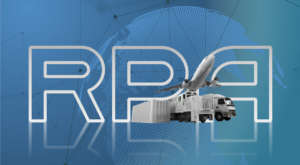Technology has historically sparked fear, anger or both in people whose lives are adversely affected by it. Even the great Albert Einstein once uttered, “It has become appallingly obvious that our technology has exceeded our humanity.”[1] That’s exactly how some people feel today about automation, robotics, and artificial intelligence (AI). Ilan Moscovitz (@IlanMoscovitz) writes, “Over the next 25 years, a revolutionary technology will transform our world. It will save us money, boost production of goods fivefold, and make our lives more comfortable. But it will crater wages by 90%, drive whole swaths of skilled workers to starvation, destroy families, and cause wide-scale political and social upheaval, sparking mobs, riots, and armed rebellion.”[2] You’ve heard the fear-mongering about AI; but, you might be surprised to learn Moscovitz wasn’t writing about AI. He explains:
“The year is 1804. The invention: The Jacquard loom. The Jacquard loom is a wooden contraption that fits to the head of a regular loom. You feed it punch cards, and it controls the weaving patterns for you. It’s efficient, it’s cost-effective, and anyone can operate it. No more need for well-paid cotton and silk weavers. While plunging prices of textiles made 19th-century consumers better off, skilled weavers went from comfortable three-day work weeks to being too poor to own bedding. Many became ‘Luddites,’ machine smashers and arsonists, named for their fictional leader, Ned Ludd of Robin Hood’s Sherwood Forest.”
Nobody likes to be called a Luddite. It means you are incapable of adapting to new circumstances; but we are likely to encounter a new generation of Luddites as emerging technologies threaten traditional jobs. One of the technologies likely to come under attack is Robotic Process Automation (RPA). RPA is today’s equivalent of the Jacquard loom.
Robotic Process Automation and Jobs
Technologies have historically been developed for two reasons: To relieve humans of tedious jobs and/or to increase productivity. Those motives remain valid even in the Digital Age. Robotic Process Automation was developed to automate so-called “swivel chair” work. Linda Tucci (@LTucci), explains, “Robotic process automation … refers to software that can help automate mainly back office work that is rules-driven, repetitive and involves overlapping systems: think tasks that search, gather, collate and update data.” [3] Swivel chair work is boring work and boring work leads to tedium which leads to errors which results in undesirable consequences. Eliminating swivel chair work is good for the employee and the company. Although RPA will eliminate some jobs; for the most part, it will relieve employees of tedious tasks rather than replace them altogether. Bob Violino (@BobViolino) writes, “For some, RPA is seen as a technology designed to replace full-time human labor outright and therefore to be treated with caution. For others, it has the potential for huge cost savings and can enable enterprises to move people from mundane tasks such as data entry to more exciting endeavors. Recent research indicates that there’s a growing demand for RPA, which involves the use of software robots to handle any rules-based repetitive tasks quickly and cost effectively. And deploying the technology doesn’t have to result in throwing a lot of people out of work.”[4]
Despite its disruptive nature, Violino writes, “RPA appears primed for significant growth, despite the fact that many organizations remain confused or concerned about the impact these tools might have on their operations.” How significant is RPA growth predicted to be? Karl Flinders (@Karlfl) reports, “Most European enterprises (92%) expect to adopt robotic process automation (RPA) technology by 2020.”[5] Europe isn’t the only region where RPA is experiencing growth. Analysts from Market Research Future predict, “The industry for robotic process automation is estimated to develop to revenues worth USD 2,700 Million by the year 2023, while expanding at 29 per cent CAGR between 2017 and 2023.”[6]
RPA and Beyond
As Tucci noted above, RPA is ideal for use in rules-driven environments. Even in those environments, however, you need to understand how best to implement RPA. Vishal Awasthi, Senior Vice President of Technology at Serrala, notes, “RPA can have a significant impact on your organization if you understand how it’s used — but, like any technology, it’s not a panacea: it must be implemented and managed correctly or you won’t realize its full benefits.”[7] So where do you start? Terry Walby (@terrywalby), Chief Executive of London-based Thoughtonomy, suggests looking for processes in which humans are the ‘process glue’ between various systems.[8] Having identified potential processes for automation, Awasthi recommends moving slowly but deliberately. “When implementing classic rules-based RPAs,” he writes, “it is best to start by applying the technology to simple and straightforward tasks.” The reason for such caution is simple: “If the wrong rules are in place, you risk gaining efficiency at the cost of effectiveness. RPA initiatives can fail if the technology causes errors. … If a process requires complex or fuzzy logic, it is best to wait to introduce RPA until after the company gains confidence with the technology with other less complex processes.”
Once automated processes are running smoothly, Awasthi believes companies should apply AI and RPA to more complex tasks. In other words, they should implement what I call Cognitive Process Automation™ (CPA). Cognitive Process Automation goes beyond the accomplishment of routine tasks. CPA has the potential to not just automate, but to improve processes by dynamically processing and executing subtle decisions as if they were made by the best human expert. Violino notes some companies are disillusioned when implementing RPA because their end goal was job elimination. Saugata Ghosh, a senior manager of digital services at Capgemini, asserts such a view is short-sighted. “Initially,” he states, “everybody was after headcount reduction. Most people are telling us now that their focus is on reducing errors, improving compliance, or improving the customer experience. We’re certainly seeing maturity in this area and the focus has shifted from the tactical to more strategic and sustainable objectives.”[9]
Summary
By identifying processes in which humans are the glue keeping the process together, specifying the rules they use, and automating simple tasks first, organizations can successfully implement RPA. Awasthi notes some of the benefits of successful RPA implementation include, freeing up high-value employees, 24/7 productivity, and improved process efficiency. He concludes, “Always think about how to optimize processes before you consider applying RPA technology. … RPA is just a technology that facilitates better processing. When intelligently applied, RPA can deliver real value to the organization through greater speed, efficiency and employee satisfaction.”
Footnotes
[1] Kendall Bird, “Technology Quotes to Inspire You Today,” Rasmussen College, 19 October 2012.
[2] Ilan Moscovitz, “Opening Artificial Intelligence’s Black Box,” The Motley Fool, 31 December 2017.
[3] Linda Tucci, “Robotic process automation software: Find the right target,” TechTarget, 31 July 2016.
[4] Bob Violino, “The software robot invasion is underway,” ZDNet, 20 June 2018.
[5] Karl Flinders, “Nine out of 10 enterprises will use robotic process automation by 2020,” Computer Weekly, 20 June 2018.
[6] Market Research Future, “Robotic Process Automation Market 2018,” AB Newswire, 15 March 2018.
[7] Vishal Awasthi, “Understanding And Wisely Implementing Robotic Process Automation,” Manufacturing Business Technology, 14 June 2018.
[8] Heidi Vella, “Getting started with robotic process automation,” Tech HQ, 7 May 2018.
[9] Peter Gutierrez, “Making AI and robotics work for your business,” IoT Hub, 12 October 2016.





